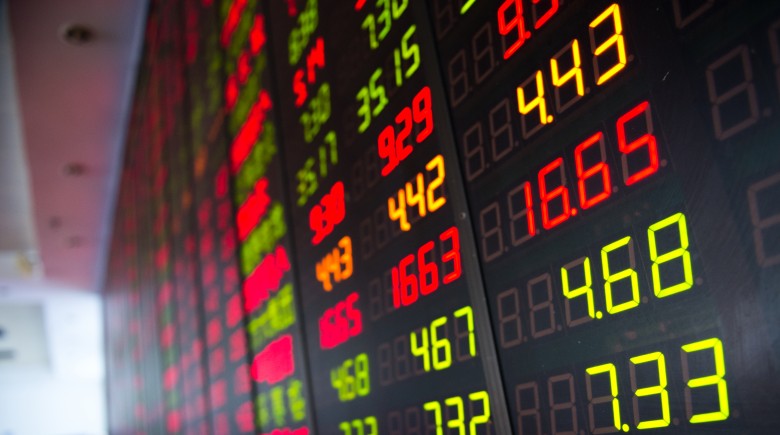By now, investors have gotten the message: dividend stocks are good. And not just good in that they tend to be “blue chip” companies with a long track record. But also good in the bad times as the dividend yield will provide a cushion during any downturns. That has the added benefit of making sense. After all, if a stock is yielding, say, 4%, every time it dips the yield for the new buyer is higher. If it dips again it’s even higher, and so on. Eventually, the logic goes the bottom will be hit as the dividend payout is too great for the stock to fall any further. Those companies without a dividend on the other hand, could more easily get caught in a market correction and plunge much further. That is all undeniably true, at least for the great majority of companies. But, there does come a time where the math is much more difficult:
As Mebane Faber of Cambria Investment Management recently pointed out, dividend stocks that normally trade at a deep discount to the broader market are now trading for a significant premium. Consider that in 1997, the P/E of defensive sectors characterized by dividend payers was sometimes as much as 40% below the relative P/E of the broader market… but in 2013, defensive dividend payers are trading for a 20% premium.
Now, this does not negate the fact that a dividend will cushion against a downturn in the markets (assuming that the company is healthy enough to continue its dividend, of course), but that cushion is now getting awfully thin. Add to this the fact that rates on treasuries and bank CD’s are at or near all time lows and the cushion is thinner still. If rates begin to go head back to the “normal” range the competition with dividend stocks becomes much more fierce. And let’s not forget that there are bound to be investors that really don’t want to be in stocks to begin with. With rates so low there has been a certain sector of the market which is “reaching” for yield. This has all worked out swimmingly, basically uninterrupted for 5 years or so. But how committed are these yield “hogs” to staying in their stocks when things turn nasty? No one knows the answer to that, of course, but it’s worth wondering about. These dividend stocks are not where they used to be and in fact they may be in a position that is opposite of their reputation:
The volatility is up, the dividends are down and investors are paying a premium for this risky combination.
Now, let’s be clear. None of this means that dividend stocks are going to take a hit anytime soon. But it does mean that many people may have investments that are not quite what they think they are. As always, it is a good idea to assess one’s portfolio to make sure it is properly aligned with the original plan. If your dividend stocks have become a larger portion of your portfolio than when you started, whether by capital appreciation or by reaching for yield, it may be a good time to take inventory.
By now, investors have gotten the message: dividend stocks are good. And not just good in that they tend to be “blue chip” companies with a long track record. But also good in the bad times as the dividend yield will provide a cushion during any downturns. That has the added benefit of making sense. After all, if a stock is yielding, say, 4%, every time it dips the yield for the new buyer is higher. If it dips again it’s even higher, and so on. Eventually, the logic goes the bottom will be hit as the dividend payout is too great for the stock to fall any further. Those companies without a dividend on the other hand, could more easily get caught in a market correction and plunge much further. That is all undeniably true, at least for the great majority of companies. But, there does come a time where the math is much more difficult:
As Mebane Faber of Cambria Investment Management recently pointed out, dividend stocks that normally trade at a deep discount to the broader market are now trading for a significant premium. Consider that in 1997, the P/E of defensive sectors characterized by dividend payers was sometimes as much as 40% below the relative P/E of the broader market… but in 2013, defensive dividend payers are trading for a 20% premium.
Now, this does not negate the fact that a dividend will cushion against a downturn in the markets (assuming that the company is healthy enough to continue its dividend, of course), but that cushion is now getting awfully thin. Add to this the fact that rates on treasuries and bank CD’s are at or near all time lows and the cushion is thinner still. If rates begin to go head back to the “normal” range the competition with dividend stocks becomes much more fierce. And let’s not forget that there are bound to be investors that really don’t want to be in stocks to begin with. With rates so low there has been a certain sector of the market which is “reaching” for yield. This has all worked out swimmingly, basically uninterrupted for 5 years or so. But how committed are these yield “hogs” to staying in their stocks when things turn nasty? No one knows the answer to that, of course, but it’s worth wondering about. These dividend stocks are not where they used to be and in fact they may be in a position that is opposite of their reputation:
The volatility is up, the dividends are down and investors are paying a premium for this risky combination.
Now, let’s be clear. None of this means that dividend stocks are going to take a hit anytime soon. But it does mean that many people may have investments that are not quite what they think they are. As always, it is a good idea to assess one’s portfolio to make sure it is properly aligned with the original plan. If your dividend stocks have become a larger portion of your portfolio than when you started, whether by capital appreciation or by reaching for yield, it may be a good time to take inventory.







